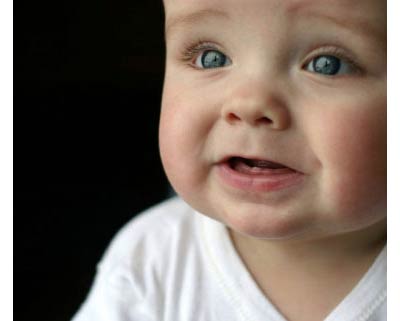The Beginnings

You can tell when your infant is teething by looking at their gums and seeing if they have any white buds under the gums
Babies generally begin teething at 6 months. However, they can start as early as 3 months. My daughter, for instance, was born with a legit baby tooth so she began WAY earlier than the normal infant. When you suspect that your infant is teething look for these signs:1. Larger amounts of drooling.
2. Fussier during the night times.
3. Increase in gnawing on hands, feet, and other objects.
4. Increases in runny noses.
5. You notice white buds beneath your baby's gums.
6. Decreases in eating behaviors. Obviously, infants may not have all of these at once, but it's good to keep an eye out for each of these signs so you can help move baby through it smoothly (and so that you can get some sleep!). This pain may come on gradually or suddenly, simply depending upon your infant.
What do I do when my infant is teething?!
So, there are a couple things you can look into. My personal favorite is simply the frozen gel rings. The cold helps to numb the pain for your little one and gives them something to gnaw on to help relieve the pressure on their gums. Isn't it legit that baby's figured out that chewing on things would help relieve the pressure of their gums? I think that's awesome! Some other things that my personal pediatrician as well as other mom's have recommended to me:1. Otter pops (store bought or homemade). You don't want to give your infant a ton of these, but one or two during the day will help to numb their gums and hopefully get some food down for them.
2. Silicone teething jewelry are also a great option. They are safe, firm, but still gushy for your little one. And, bonus, you can just let them wear it (or wear it yourself) so that it's easy access!

Chewbeads silicone bracelets and necklaces are great for little gums!
4. Amber Teething Necklaces are also one that some mom's swear by. They are not for baby to chew on, but you place them on either your infants neck or wrist (necklace vs. bracelet), the amber warms against their skin and then the oil seeps into their skin to help with pain management. Figure it's not hurting anything at least, so it is worth a try if your infant is really in pain. 5. Fruit popsicle's. I have one of the Zoku popsicle makers so that I can just get some fruit juice and freeze it right away! My baby is obsessed with them just a little bit. And by a little bit, I mean a lot.
What about night wakings?
So when your baby really starts teething, they will probably stop sleeping all the way through the night due to the pain they are experiencing. Some recommendations from mothers and doctor's alike is to comfort your infant, but don't pick them up and don't try to feed them (assuming your infant is older). This is because when you start picking them up and feeding them again in the middle of the night, it teaches your baby that when they cry they get extra play time or extra food; which, depending on their age, they may no longer require. What I've been told by my doctor is to go in, give my baby her pacifier, rub her back, and sing her a song or talk to her a little bit until she falls back asleep. Then, slowly move out of the room. If your baby will not remain asleep after you leave, then they recommend to sit by the crib so you can touch your baby, but to still not pick them up. We just don't want to make it harder for you when they're done teething. It's just a fact that baby's love attention, but mom's and dad's don't love giving attention at 2 a.m. Or at least I don't know any parents that like to if they can help it. Teething can be hard, but it will end! I promise! Just stick to it and learn the art of distraction. Like how Ninja's learn karate. You could be a DISTRACTION NINJA. Totally resume worthy. Distraction Ninja. This could be you.
Distraction Ninja. This could be you.






1 comment
[…] issue that’s normal for many babies. So amid helping them learning to play peek-a-boo and getting through that first tooth, how can you make sure that your little one gets the proper skin […]